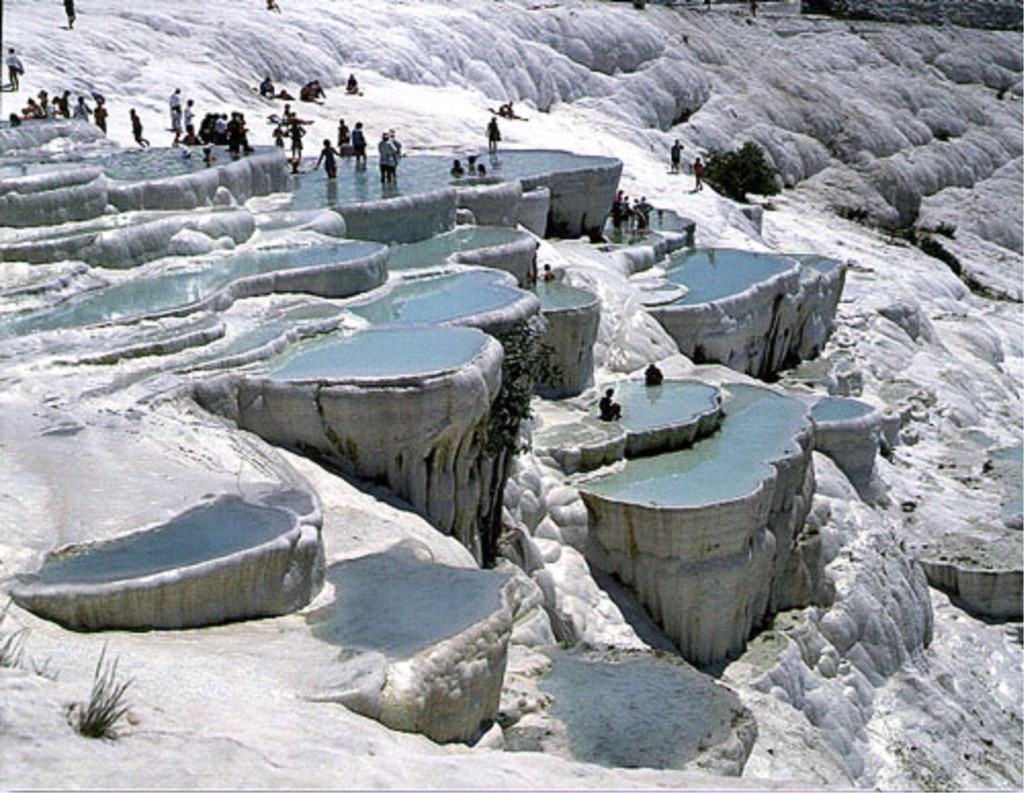Visitors who just want to tour the best places to see in Istanbul end up visiting Pamukkale which is one of the most unique tourist attractions in the country. Located just off the Hierapolis-Pamukkale town road, the Pamukkale with its white petrified lime cascades is a natural wonder that has given it the name the “Cotton Castle”. The mineral deposits from the volcanic springs and the spring waters from Cal Mountains form the white-like cotton terraces and this is what has given the site its unofficial name.
Apart from its beauty, the cotton castle receives visitors who go seeking for healthy benefits especially the elderly and those ailing. The Pamukkale Antique Pool which is a restorative hot pool is located just beside the Temple of Apollo. They walk on the calcium rich waters barefooted for sometime as doing this is forbidden so as to keep the travertine white. Pamukkale has since been declared a UNESCO World Heritage Site. Jewelry, architectural fragments, coins, statues as well as sarcophagi and reliefs are some of the collections that are displayed at the Pamukkale Museum.
At the Greco-Roman city of Hierapolis, there is a 2nd Century AD building that used to be a theatre and has contributed to the attraction being one of Turkey 5 best tourist attractions. Visitors get to see the 30 rows of seating and the stage buildings of the theater of Hierapolis that could hold a total of 20,000 spectators. Centuries ago, this ancient Roman city was home to a huge number of temples and this is where its name was derived from as Hierapolis simply means the sacred city.
The city seats on solid limestone layers at the top of the cotton castle and it is said to date back thousands of years ago. Some of the sacred ruins of the city include the Temple of Apollo, the Martyrium of St. Philip and the Plutonium. The Temple of Apollo that only has the platform, the Roman and the Hellenistic foundations remains of this temple that was dedicated to the founder and the patron god of the city.
The story of the Plutonium is quite interesting and the reason it is sealed off is because since the ancient times, it emits poisonous vapors as even the animals that entered it died. This is an underworld cave that was used to enter the underworld. By visiting this travel blog , you get to learn that the Necropolis is one of the highlights of the ruins.
This graveyard that holds about 1,200 tombs is considered as Anatolia’s largest ancient cemetery. Although some of the graves here have Jewish inscriptions, they date back to not only the Roman periods, but also the Hellenistic and the Christian periods. The tomb of Flavius Zeuxis on the right hand of the Gate of Domitian is to be noted since he is known to have traveled by sea to Italy about 72 times. Visitors who want to have several days at the UNESCO World Heritage Site can stay at the thermal hotels.
